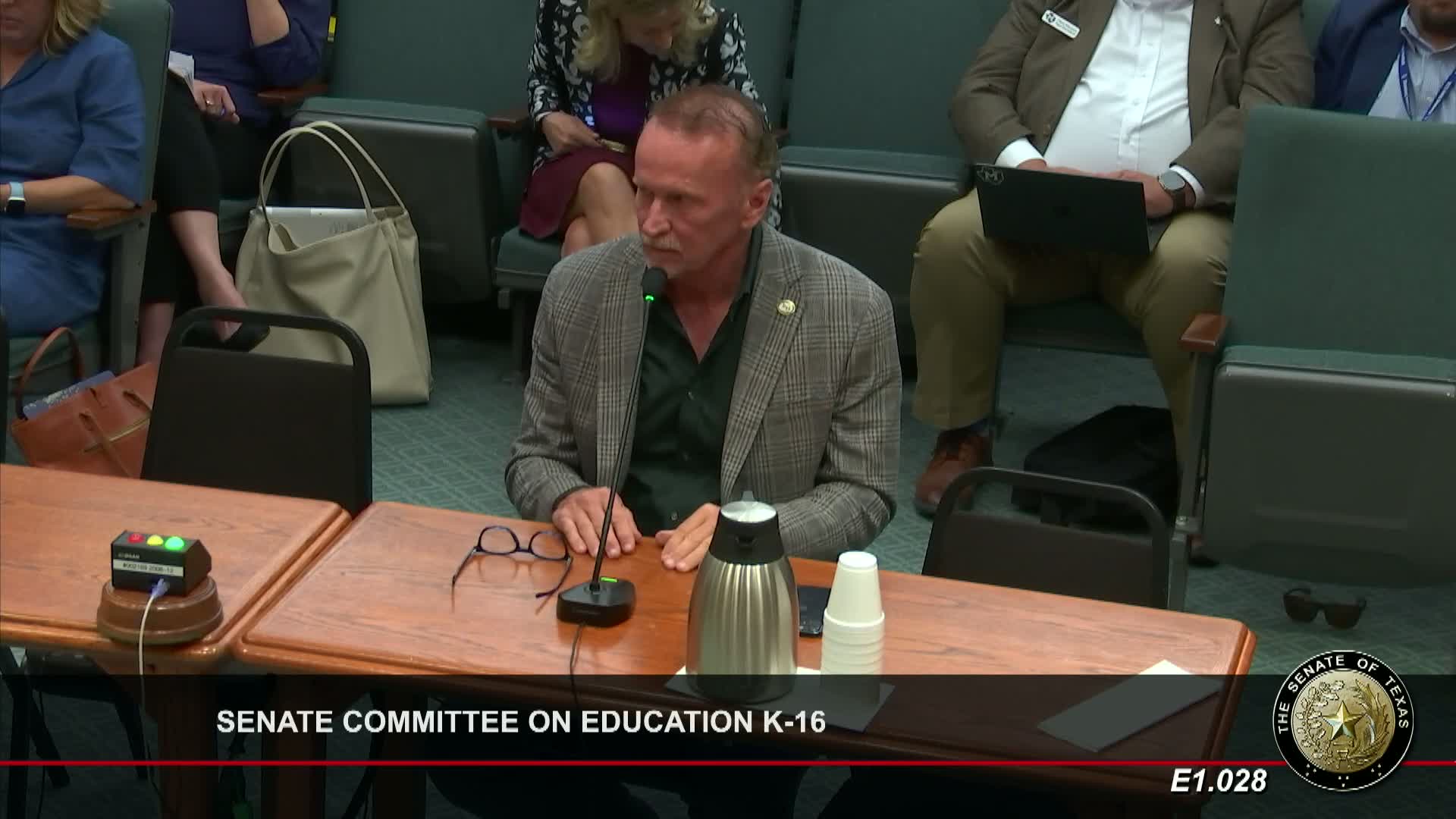Superintendent Poole advocates for more autonomy in high-performing school districts
May 15, 2025 | Committee on Education, Senate, Legislative, Texas
This article was created by AI summarizing key points discussed. AI makes mistakes, so for full details and context, please refer to the video of the full meeting. Please report any errors so we can fix them. Report an error »

During a recent meeting of the Texas Senate Committee on Education, significant discussions emerged regarding the financial challenges faced by school districts that prioritize teacher salaries. A key speaker highlighted the need for greater autonomy for districts that have demonstrated effective management and exceptional educational outcomes.
The speaker, a respected superintendent, emphasized that their district pays an average teacher salary of $80,000, which is the highest in the state. This commitment to competitive salaries has resulted in a $3.5 million annual penalty due to the limited state compensation for additional costs associated with higher salaries. The superintendent argued that the state’s funding model does not adequately support districts that invest in their educators, particularly those with a high percentage of economically disadvantaged students.
The committee members engaged in a dialogue about the implications of salary structures and the necessity for a more flexible funding approach. The superintendent pointed out that their district has consistently achieved high performance ratings, including all A's in assessments, and has not employed a non-certified teacher in over two decades. This track record underscores the effectiveness of their investment in teacher salaries and professional development.
In response to inquiries from committee members, the superintendent suggested that metrics for evaluating top-performing districts should include not only salary levels but also educational outcomes and community support for local schools. This perspective aims to foster a more equitable funding system that recognizes and rewards districts for their successful practices.
As the committee continues to deliberate on educational funding reforms, the discussions from this meeting highlight the pressing need for policies that empower districts to make decisions that best serve their students and communities. The outcomes of these discussions could lead to significant changes in how Texas supports its school districts, particularly those that prioritize teacher compensation and student success.
The speaker, a respected superintendent, emphasized that their district pays an average teacher salary of $80,000, which is the highest in the state. This commitment to competitive salaries has resulted in a $3.5 million annual penalty due to the limited state compensation for additional costs associated with higher salaries. The superintendent argued that the state’s funding model does not adequately support districts that invest in their educators, particularly those with a high percentage of economically disadvantaged students.
The committee members engaged in a dialogue about the implications of salary structures and the necessity for a more flexible funding approach. The superintendent pointed out that their district has consistently achieved high performance ratings, including all A's in assessments, and has not employed a non-certified teacher in over two decades. This track record underscores the effectiveness of their investment in teacher salaries and professional development.
In response to inquiries from committee members, the superintendent suggested that metrics for evaluating top-performing districts should include not only salary levels but also educational outcomes and community support for local schools. This perspective aims to foster a more equitable funding system that recognizes and rewards districts for their successful practices.
As the committee continues to deliberate on educational funding reforms, the discussions from this meeting highlight the pressing need for policies that empower districts to make decisions that best serve their students and communities. The outcomes of these discussions could lead to significant changes in how Texas supports its school districts, particularly those that prioritize teacher compensation and student success.
View full meeting
This article is based on a recent meeting—watch the full video and explore the complete transcript for deeper insights into the discussion.
View full meeting
